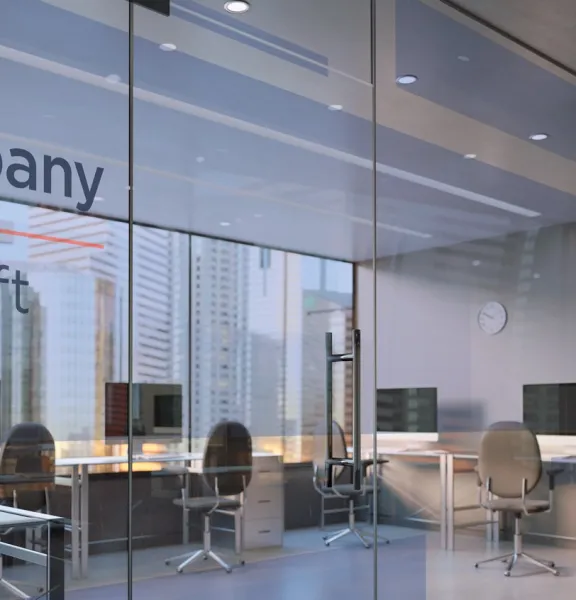There are multiple days within each year that remind the growing importance of environmental movement.
One of the oldest is celebrated on April 22. This originates back in 1970 which has also marked the birth of the modern environmental movement.
This year’s anniversary on 22/04/2023, promotes the theme “Invest in Our Planet”, which highlights the importance of dedicating our time, resources, and energy to solving climate change and other environmental issues.
A Software and IT Services company, such as Netcompany-Intrasoft, simply cannot miss that message too!
The Information and Communications Technology sector is one of the significant contributors to carbon emissions, expected to account for 14% of the world’s carbon footprint in 2040 from about 1.5% in 2007 [Source: Harvard Business View].
It is, therefore, vital that our sector should take steps to reduce our carbon footprint.
There are many ways of doing so, but some of the most efficient ones include re-exploiting current practices to minimize the environmental footprint and maximise the contribution of the company to the sustainability of our planet.
A power example of such re-exploitation is the extension of secure software development practices to also incorporate green software development practices.
Secure Software Development
Secure software development is the process of designing, building, and testing software with the goal of minimizing security risks within any software-based service. In today's digital age, cybersecurity threats are becoming increasingly common, and professionals within the software development ecosystem need to be aware of these risks and take appropriate measures to protect their software from cyberattacks.
The goal should be to enable trust through software-based offerings, guided our investments to build a Secure Software Development Lifecycle (SSDLC) for each of our products. To that end, our team of developers is trained in secure coding practices and following industry-standard security protocols and techniques throughout the development process, including Static Application Security Testing, Software Composition Analysis (SCA), Dynamic Application Security Testing (DAST) and DevSecOps. Relevant practices also include the conduction of regular security audits and penetration tests to identify and address any vulnerabilities within the produced software.
Green Software Development
Green software development is a complementary practice which refers to the process of developing software in an environmentally sustainable way. Software development can have a significant impact on the environment through its energy consumption and carbon emissions. By adopting green software development practices, we can reduce our carbon footprint and contribute to a more sustainable future.
Within this context, software development companies, can implement several green software development practices. One of the main initiatives is to use energy-efficient hardware and infrastructure, also investing in energy-efficient servers, storage devices, and networking equipment that consume less energy than traditional hardware. This can also come as a set of cloud computing services that are powered by renewable energy sources.
Another green software development practice can be to optimize produced software for energy efficiency. This can be achieved by conducting performance tests to identify any inefficient code that may consume more energy and optimize it to reduce energy consumption. Software design is also critical to minimize its resource usage, such as CPU and memory, and eventually reduce its energy consumption.
Such practices are essentially based on the practices of Secure Software Development, that are extended with new quality gates (in SAST solutions), new consumption metrics (in performed tests), substitution with eco-friendly software components (in SCA) etc.
Corporate Practices
In addition to the green software development practices, a company can also follow several corporate practices that promote sustainability and social responsibility, as part of its normal post-COVID working practices.
As an example, a company could implement a hybrid remote working policy that would allow employees to work from home or remote locations, and therefore balance the energy consumption to multiple locations. This policy would reduce the carbon footprint by minimizing the need for employees to commute to our office, reducing transportation-related emissions.
Another example can be prioritising sustainable procurement practices, such as to partner with suppliers who share the commitment to sustainability and social responsibility. This can ensure that they follow ethical and sustainable business practices, such as fair usage of resources, responsible sourcing, and waste reduction.
Conclusion
Earth Day 2023 comes with a reminder: Sustainability of individuals, companies and organisations should be aligned with the sustainability of the planet, otherwise this “individual sustainability” will not be really sustainable!
As software industry has a significant impact on the environment, it’s important to prioritize green practices and corporate practices that promote sustainability and social responsibility. This can be done in a cost-efficient and, even, profitable manner, if we all consider extending our current practices to also incorporate green practices.
Adopting these practices at any point and volume, each individual and organisation can contribute to reducing environmental footprint, contribute to a more sustainable future, and, as the EartDay2023 reminds: “…support healthy, happy, and wealthy communities worldwide”.
Author: Dr. Emmanouil SERRELIS, Head of InfoSec Consulting and Application Security Services, Netcompany-Intrasoft

